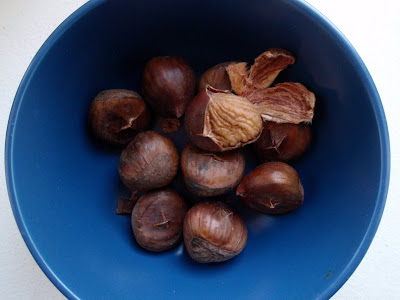
I have my doubts that words can express the awe and excitement of all those present at the dinner I attended last night. Actually, it was more of a spectacle than simply supper; it was Hakan Martenson applying the artistry and precision that he usually uses on chocolate to several slabs of raw fish. It was Sushi Night.
Sushi is visually impressive by nature: jewel-toned cuts of fish resting on pearly rice, black bands of nori encasing intricate arrangements of avocado, cucumber and more fresh fish. But to watch the tiny delicacies take shape from beginning to end, in the very same kitchen where you regularly snack on pop tarts and pretzels, is humbling. After arranging his radiant cuts of tuna, salmon, and scallops in an enormous sun pattern, Hakan wilted leeks in boiling water and used them to create beautiful green-and-white-striped serving platters. Once a huge pot of rice was ready, he began assembling long strips of cucumber and green mango for the maki, along with more surprising ingredients like teriyaki chicken strips and cream cheese, and dabbing a grid of perfectly formed ovals of rice with wasabi.


As the leek-lined surfaces filled up with sushi and maki, those of us who weren't Swedish chefs watched and salivated. The whole place had that good-sushi-is-served-here smell found in the best sushi restaurants, a strangely refreshing sweetness, which I've figured out is a combination of wasabi and pickled ginger. When everything was complete (and after a well-deserved round of applause), we readied our chopsticks and soy sauce receptacles, and faced the challenge of being the first person to take the first perfect piece of sushi off the first perfectly configured platter, of bringing ourselves to eat something too beautiful to eat.


The challenge was quickly overcome, and was worth it since everything tasted as good as it looked. For me, the highlight of the spread was an oblong ribbon of nori stuffed with scallop ceviche and black roe. The chicken-cream cheese maki was also a surprising favorite; the teriyaki seasoning added a deep flavor that you don't usually expect in sushi, but it worked well with the smoothness of the cream cheese and sticky rice.
The sense of astonishment at what we had just experienced lingered after the platters had emptied. Hakan had turned the apartment into a garden of tastes, textures, and colors, a Willy Wonka figure with a buzz cut and a hachimaki headband. I suppose this means that sushi is like candy for 20-somethings – not too surprising. I just hope he's willing to give many repeat performances.









